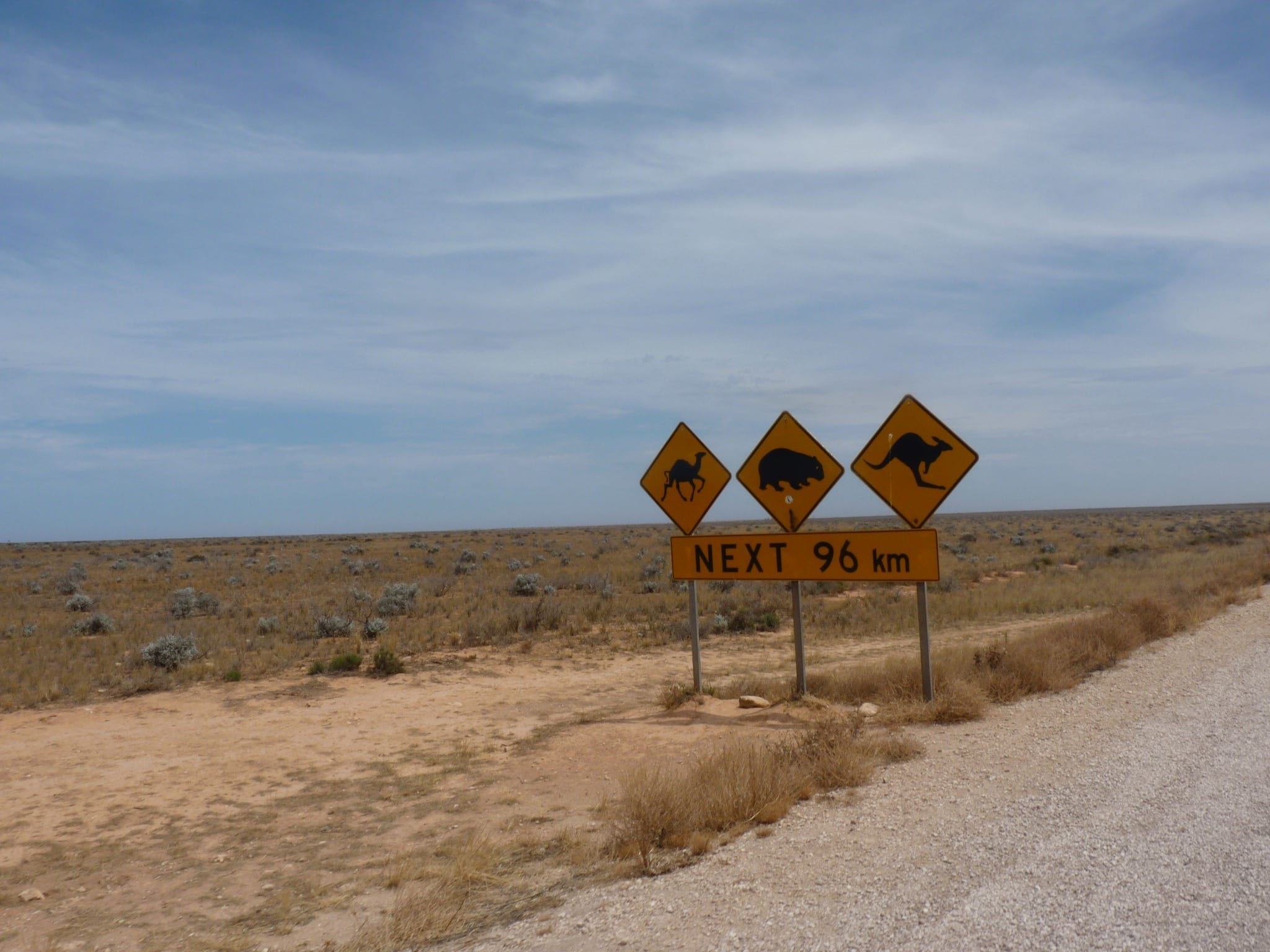Note: This article contains an affiliate link to Hema Maps. If you click through and make a purchase, we earn a small commission at no extra cost to you.
Last time we dropped into Fowlers Bay, whale-watched at Head Of The Bight and had an ice cream at Nullarbor Roadhouse.
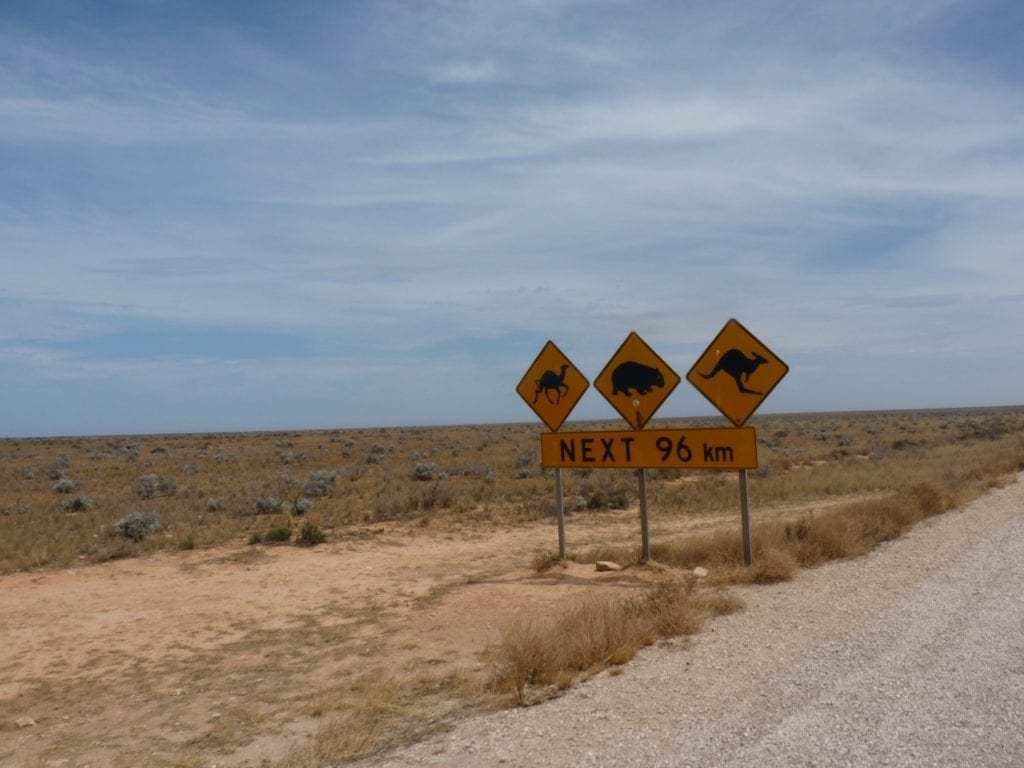
Rugged Coastlines and Crumbling Cliffs
West of Nullarbor Roadhouse, you get up close and personal with the Great Australian Bight.
The Bight is famous for its rugged cliffs and wild coastline. The highway runs quite close to the edge of the cliffs in places. Numerous marked areas let you get off the Eyre Highway and check out the rugged coastline.
The cliffs are quite dangerous. They’re unstable and tend to break off in enormous chunks. As a result, several rest areas are closed. You’d be well advised to heed any warning signs… and keep a good eye on your kids.
Actually getting out of your vehicle and walking around gives you a feel for the scale of this place.
Looking south, next stop is Antartica. You’re standing on the edge of the enormous Nullarbor Plain, which is being gradually eaten away by the wild Southern Ocean. Turn around and look north – all you can see is an endless flat, treeless plain. Awe-inspiring.
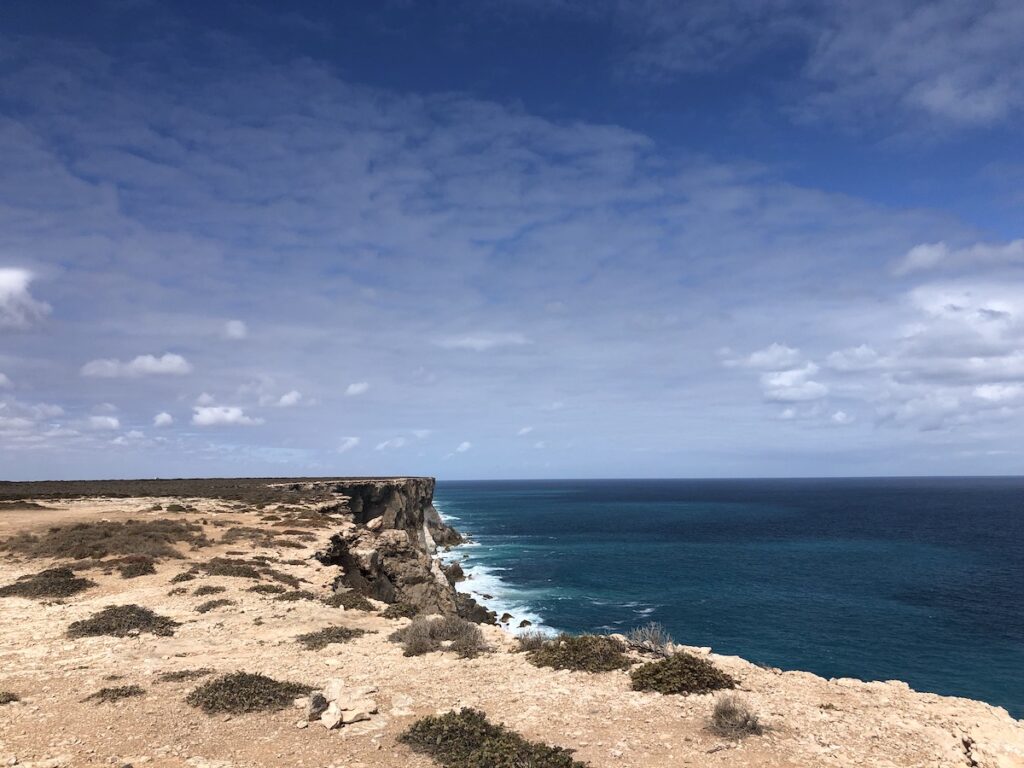
Bunda Cliffs
“And the wind did howl,
And the wind did moan,
La la la la la,
La la la la lee…”
Nick Cave could well have been camped on the edge of Bunda Cliffs when he compiled his version of the folk ballad Henry Lee.
There you are, all alone with an endless dead flat plain of stunted saltbush and bluebush surrounding 180 degrees of your vision. The remainder of your vista is filled with the wild seas of the Great Southern Ocean.
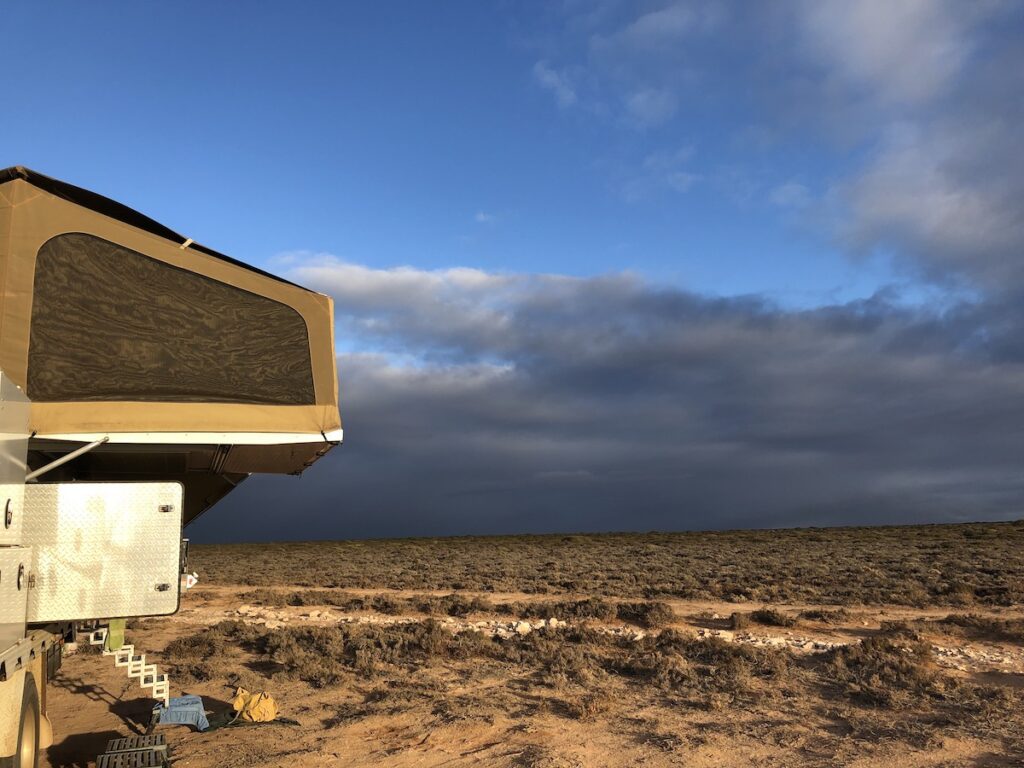
Splitting these two opposing views are the battered and bruised limestone cliffs, being pummelled endlessly by the relentless sea.
And the wind constantly blows hard, only pausing to change direction and smash you again.
You can camp along these cliffs. Stay back from the edge though. The ocean undercuts the limestone until huge chunks break away and crash into the sea without warning.
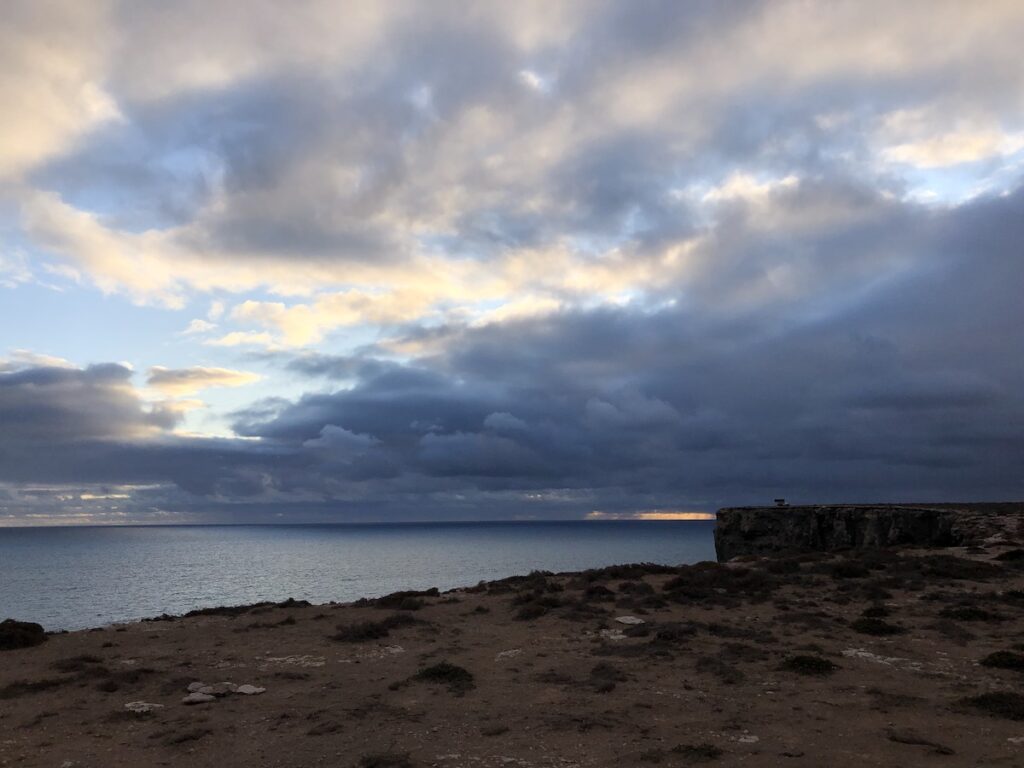
We’re certainly not big fans of wind, but camping here is an experience not to be missed.
The ocean roars and boils angrily as it does battle with the cliffs. Slowly but surely, the ocean wins. I can well understand why early sailors were so terrified of straying close to the cliffs. If they were shipwrecked here, they’d have zero chance of survival.
The best part of camping here?
You quickly get a sense of proportion. Within minutes you feel like a tiny ant, an insignificant dot on the landscape. Even on a calm day, there’s an epic battle underway between the water and the land… one that never ends.
Just watch you don’t get blown into the ocean or into the Northern Territory!
There are no services along the Bunda Cliffs, so you’ll need to be entirely self-contained including a toilet.
Koonalda Station, Surprisingly Remote
About 100km west of Nullarbor Roadhouse is the turn-off to Koonalda Station. This turn-off is unmarked. A couple at Ceduna had told us where to turn off – vague instructions about passing the four hundredth camel sign and turn right just after the burnt out log or something like this! However with a decent GPS (HEMA HX-2 Navigator or equivalent), you’ll find it easily.
Follow the dirt road for 14km until you reach Old Eyre Highway. Cross the old highway, continue for about a kilometre and you’ll be there.
When we turned off Eyre Highway, I immediately had a strong feeling of remoteness. Completely illogical – the entire Nullarbor Plain is pretty darn remote!
Perhaps seeing other vehicles on the highway reassured me we’d have help in case of a breakdown. Then to turn off into a vast open expanse, knowing we were 100% alone… well, it was a little unsettling.
Strange. I’d never had this feeling before and it hasn’t afflicted me since. Just saying.
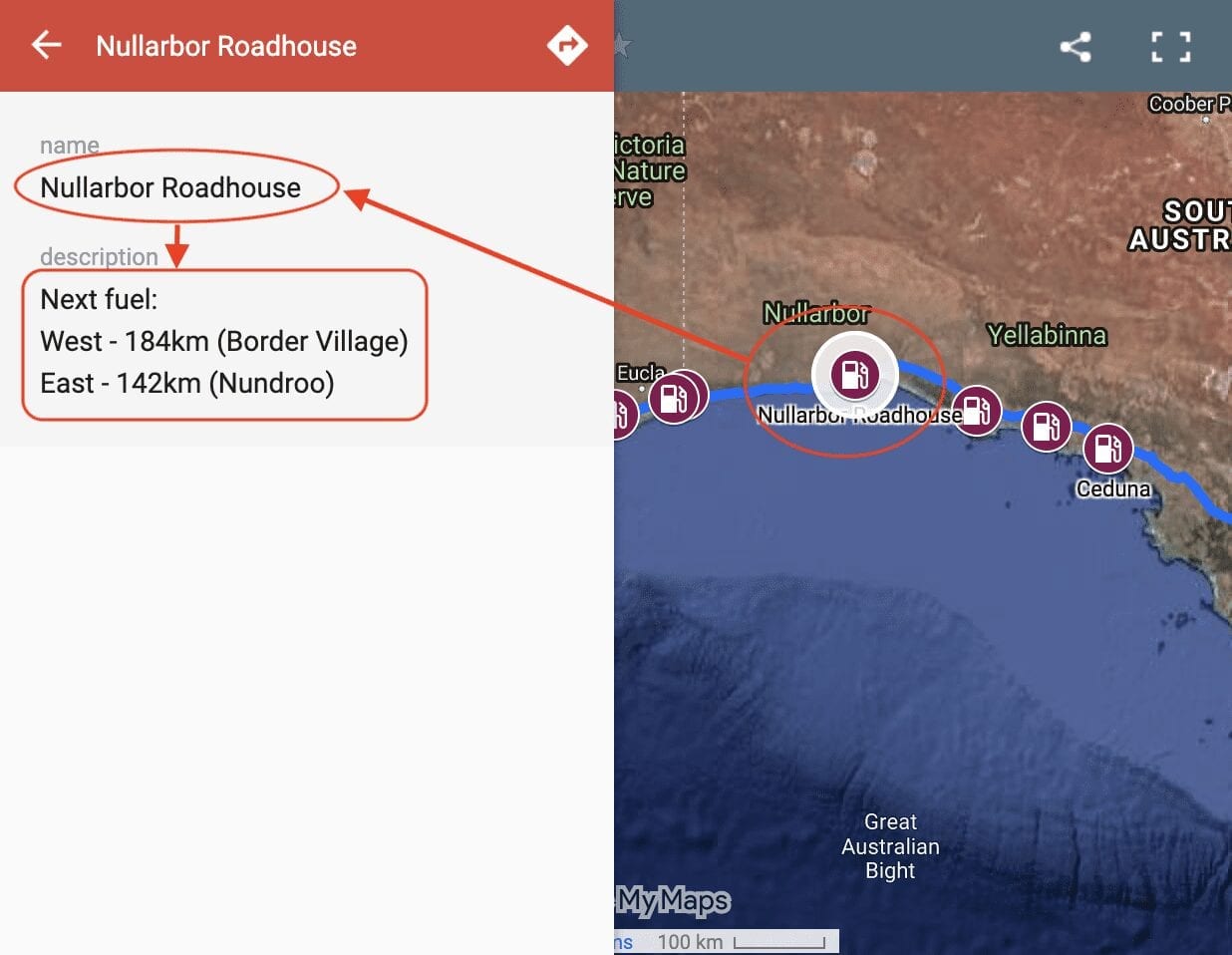
Fuel Stops
So where you can get fuel on the Nullarbor? Our Interactive Map of fuel stops across the Nullarbor will give you all the info you need.
Koonalda Station was to be our overnight rest stop. Situated in Nullarbor National Park, it was a working property until 1988.
The homestead is falling apart, the roof is caving in and of course there’s dust covering everything. It looks sad and forlorn. The exterior is made from railway sleepers from the Trans Australian railway, and some windows and doors are from the old Telegraph Station at Eucla.
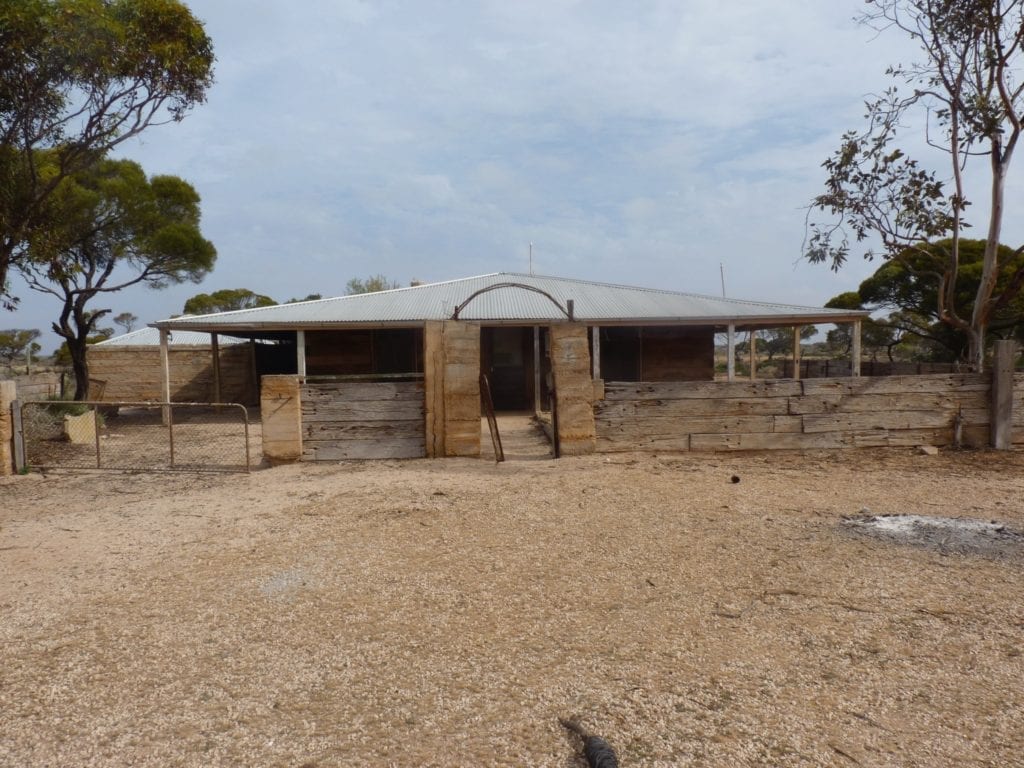
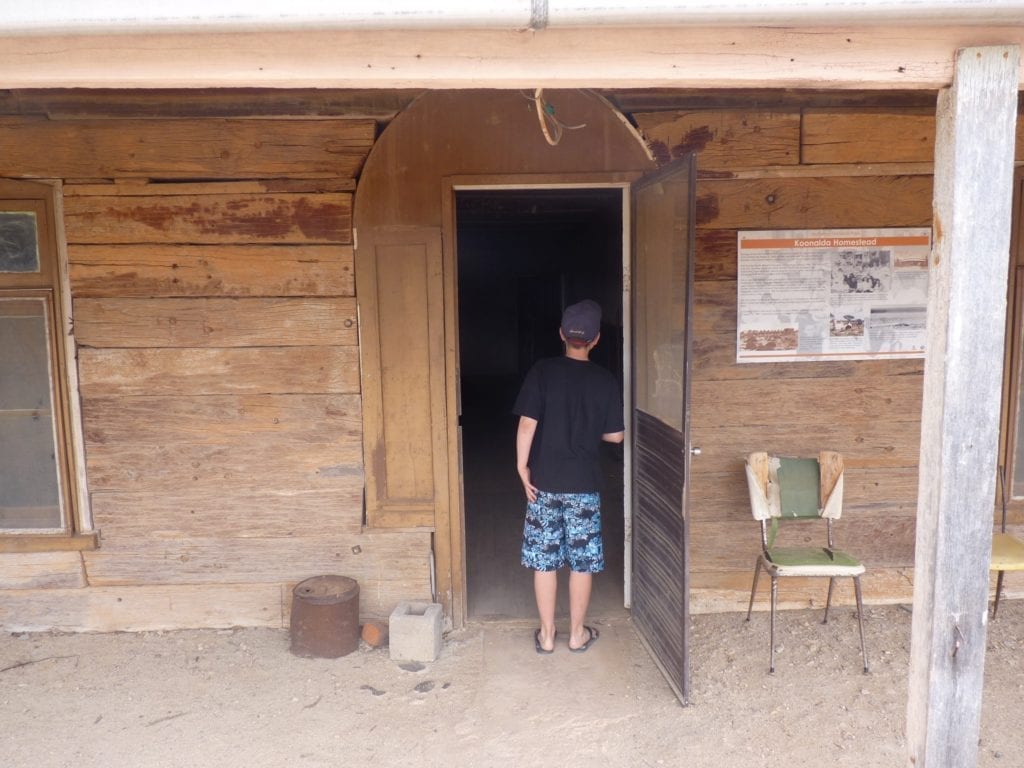
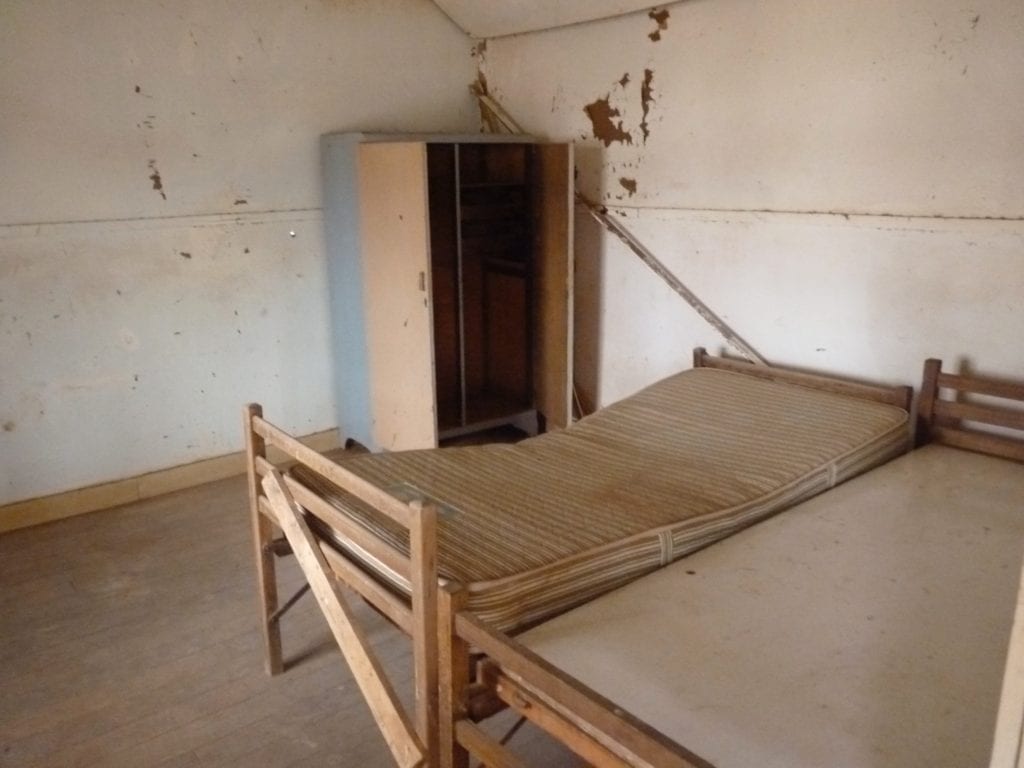
Victims Of The Old Eyre Highway
First impressions of Koonalda Station are that it’s like an old scrap metal yard. Immediate thought? “Yuk, what a mess”. Rows of old cars in various states of disrepair seem to be scattered everywhere. But once you realise why the cars are there, the place takes on an entirely different complexion.
You see, the Old Eyre Highway goes past the front gate. Koonalda was a service point for passing traffic – repairs, recoveries and fuel. Most of the old car bodies are wrecks of vehicles that didn’t make it. Sadly, there’s a fair share of mangled wrecks too. Clearly the Old Eyre Highway saw more than its fair share of bad accidents.
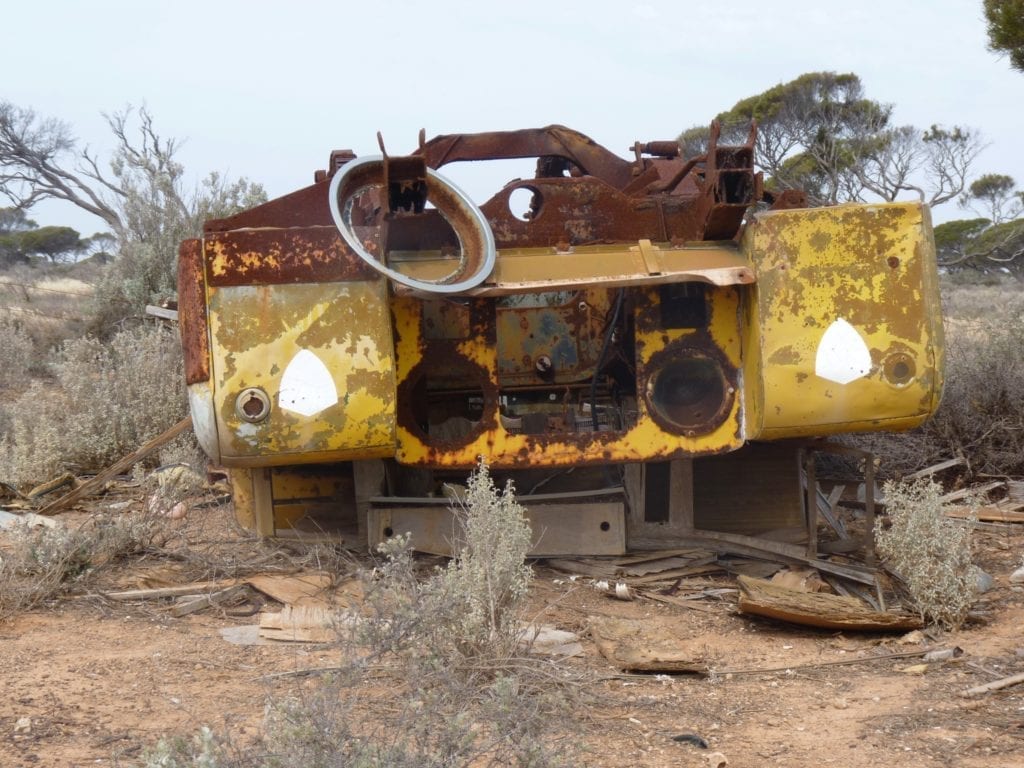
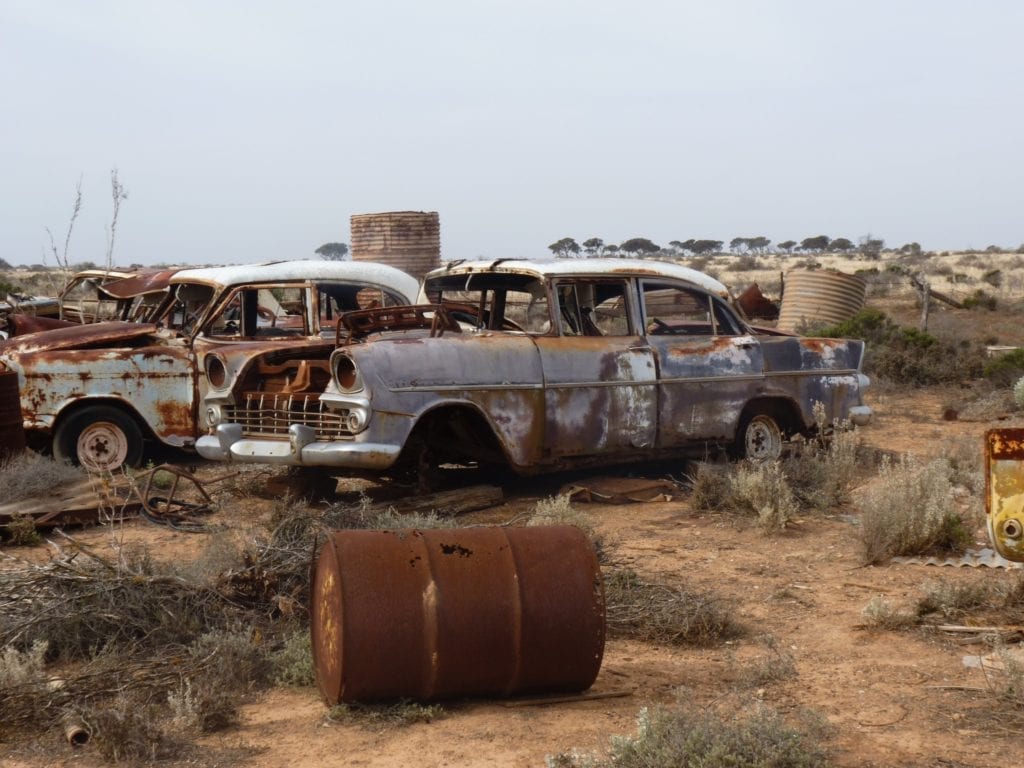
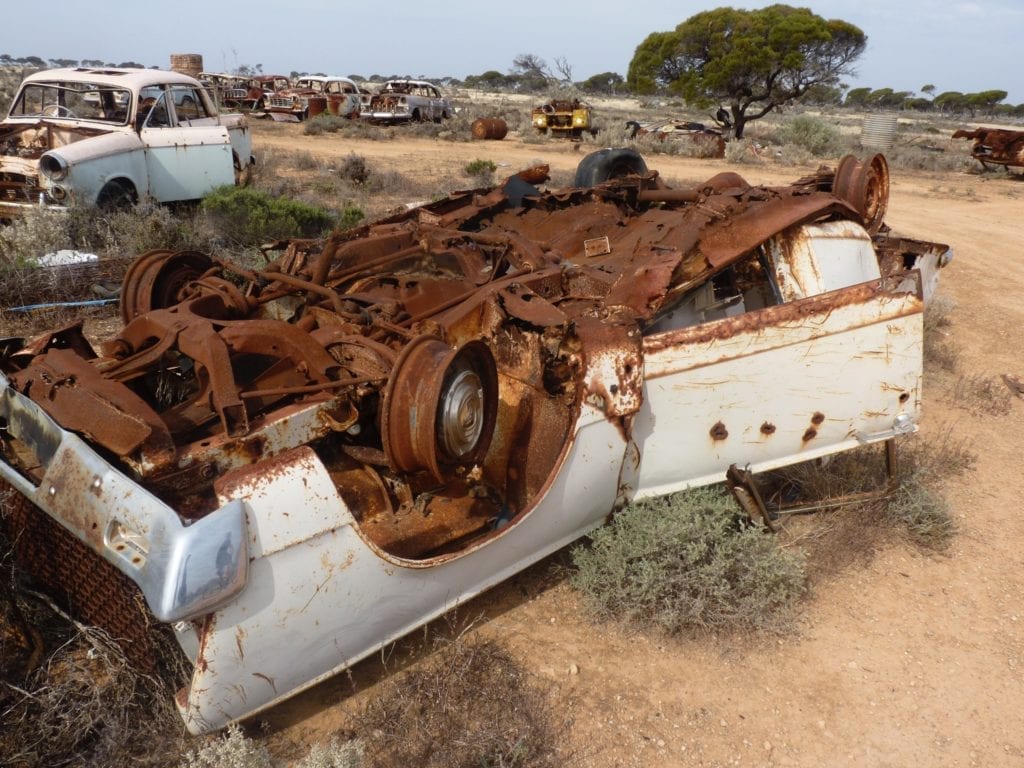
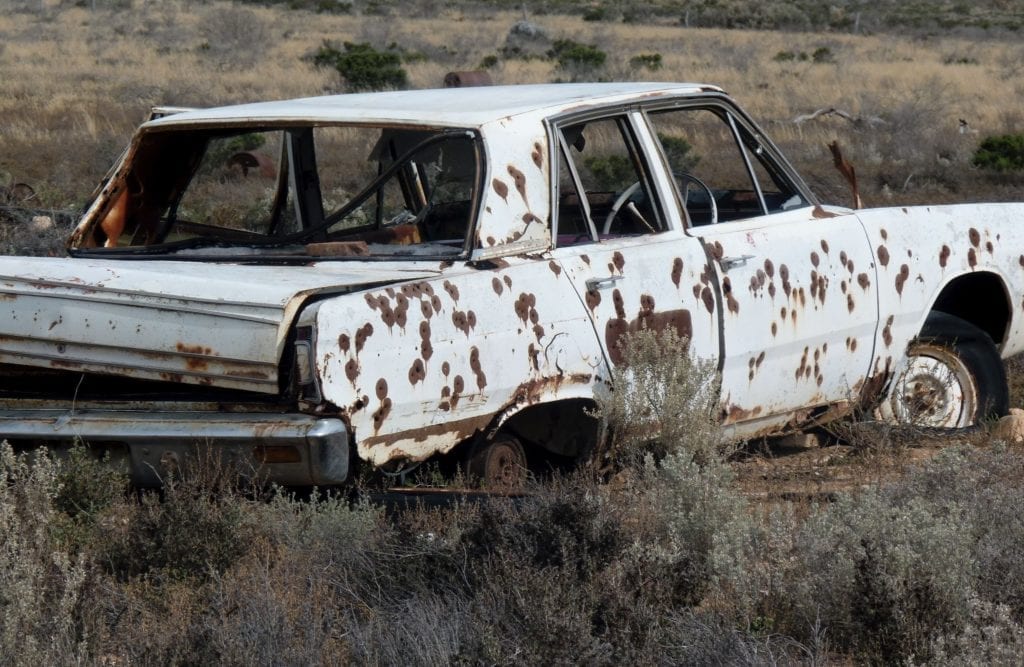
Remember, it was a dirt road all the way across. Rough and corrugated with reefs of rock and bull dust in the dry. In the wet, an ocean of mud.
Breakdowns were common. Unreliable cars travelling huge distances on such a notorious road was a bad combination. So when a vehicle expired – a common occurrence – it would be towed in and used for spare parts.
Ghosts Of The Past at Koonalda Station
Koonalda’s a pretty spooky place at night. Wind rattling through loose corrugated iron roof sheets and doors banging on their hinges actually freaked me out a bit. For some reason, this place was getting under my skin.
While the place is fascinating and a stark reminder of hard times from our recent past, it’s also full of ghosts.
Standing at the old fuel pump, you can almost see the old Holden trundling down the highway, smothered in a cloud of dust… an old bloke wandering out of the shed in his greasy overalls… an oily rag in his back pocket… gazing at the billowing dust in the distance across the shimmering Nullarbor Plain… waiting to see if the car turns in, or continues on its way.
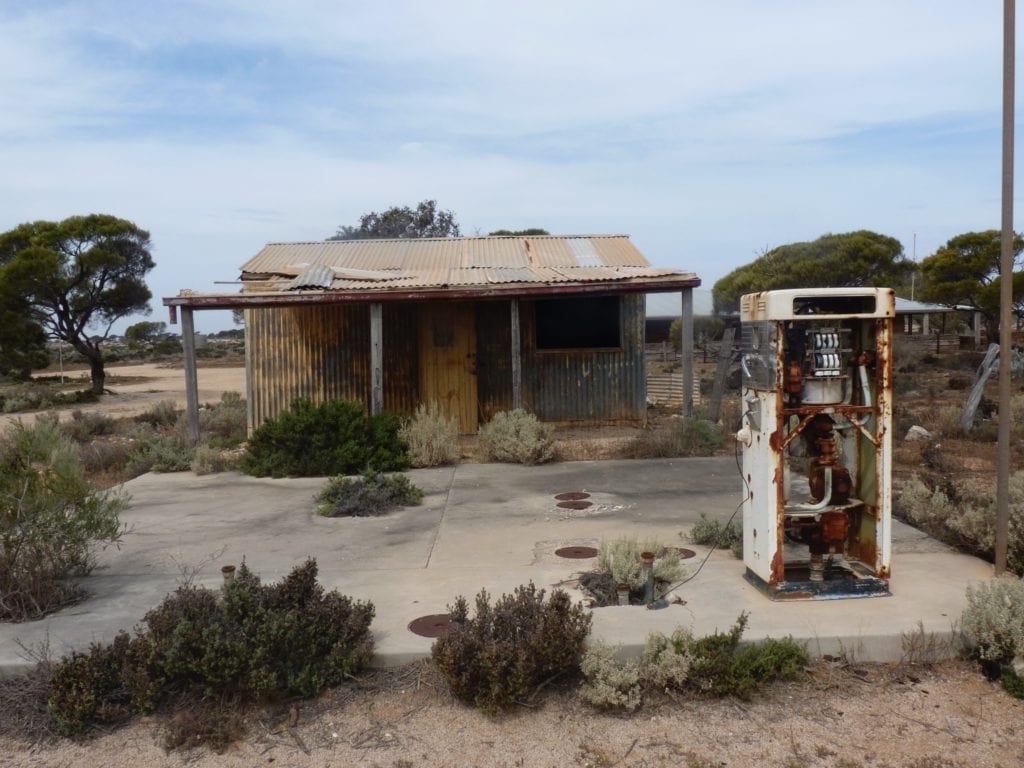
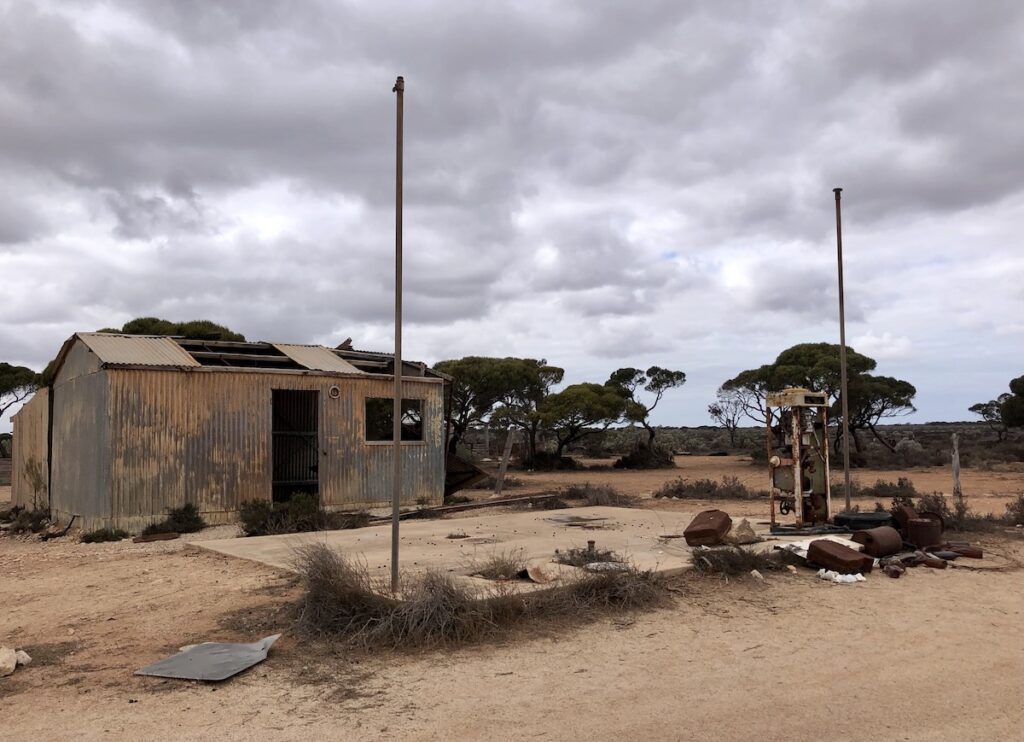
Nowhere to Hide
Late in the afternoon, a strong southerly change came through. Now a southerly in these parts can be savage… and it was. Fierce winds straight out of the Bight and no protection between the coast and our campsite.
We thought we were clever by setting up camp behind a shed. It worked a treat, until the wind swung around from the east in the middle of the night. All of a sudden, our little oasis was exposed to the full force of an easterly gale.
All night the camper creaked and groaned… joining the orchestra of old doors banging and corrugated iron flapping away.
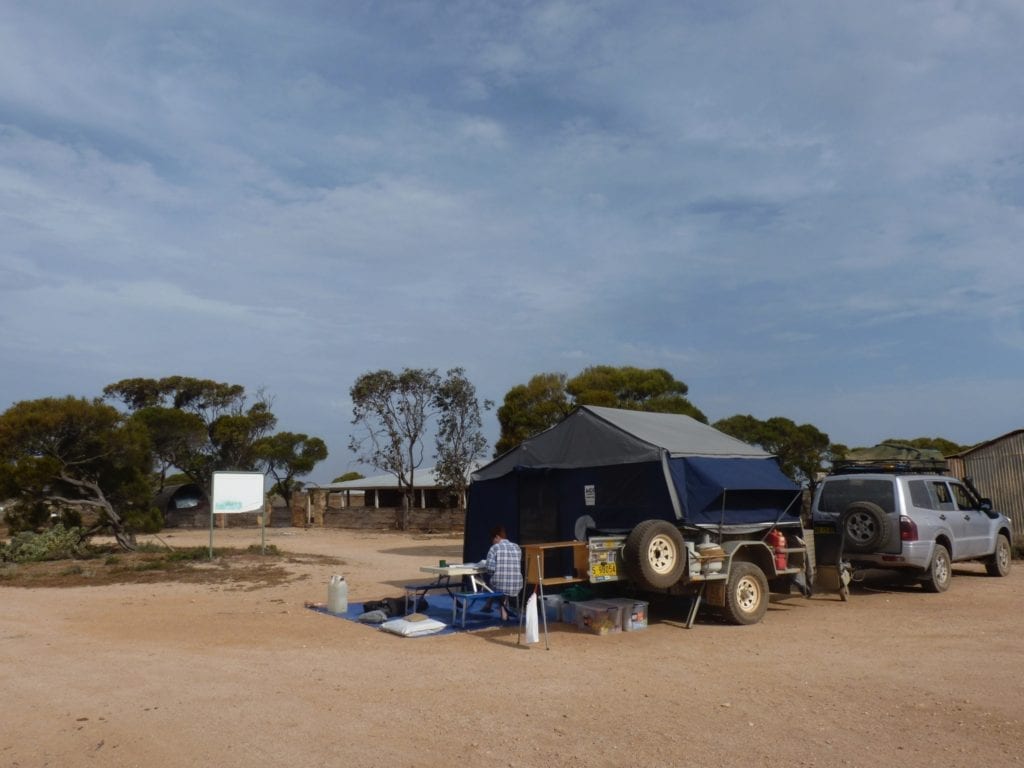
This was an initiation into the changeable weather and winds in this area. Be aware – strong winds can and do swing around a full 180 degrees in a matter of moments.
Welcome to the Nullarbor Plain… you’ve been warned!
No Escape From The Wind
Bunda Cliffs is the ideal introduction to Koonalda Station. It gives you a sense of the vastness of the Nullarbor Plain and the savage climate, which feels like it wants to tear everything apart.
Then the short trip north to Koonalda Station drops you into another world… yet the same savage winds follow close behind, determined to wreak havoc. There’s no escape from the wind, nothing to stop it no matter what direction it blows from.
You could be a million miles from anywhere. Yet you’re only a handful of kilometres from the Eyre Highway.
It’s this sense of isolation that makes the Nullarbor Plain so appealing.
Next time: Checking out Koonalda Cave.
This section of the Nullarbor trip is on Mirning Country.
Looking for more information on the Nullarbor? Then go here.
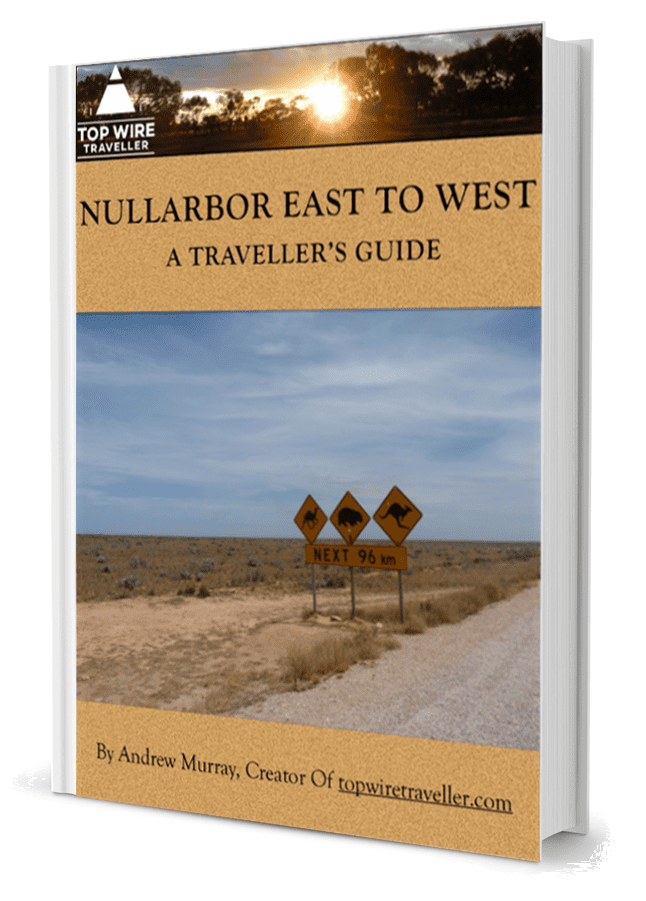
Get your BONUS Guide:
Download “Nullarbor East to West – A Traveller’s Guide”
…at our FREE RESOURCES Page!
Any questions or comments? Go to the Comments below or join us on Pinterest, Facebook or YouTube.
Any errors or omissions are mine alone.

